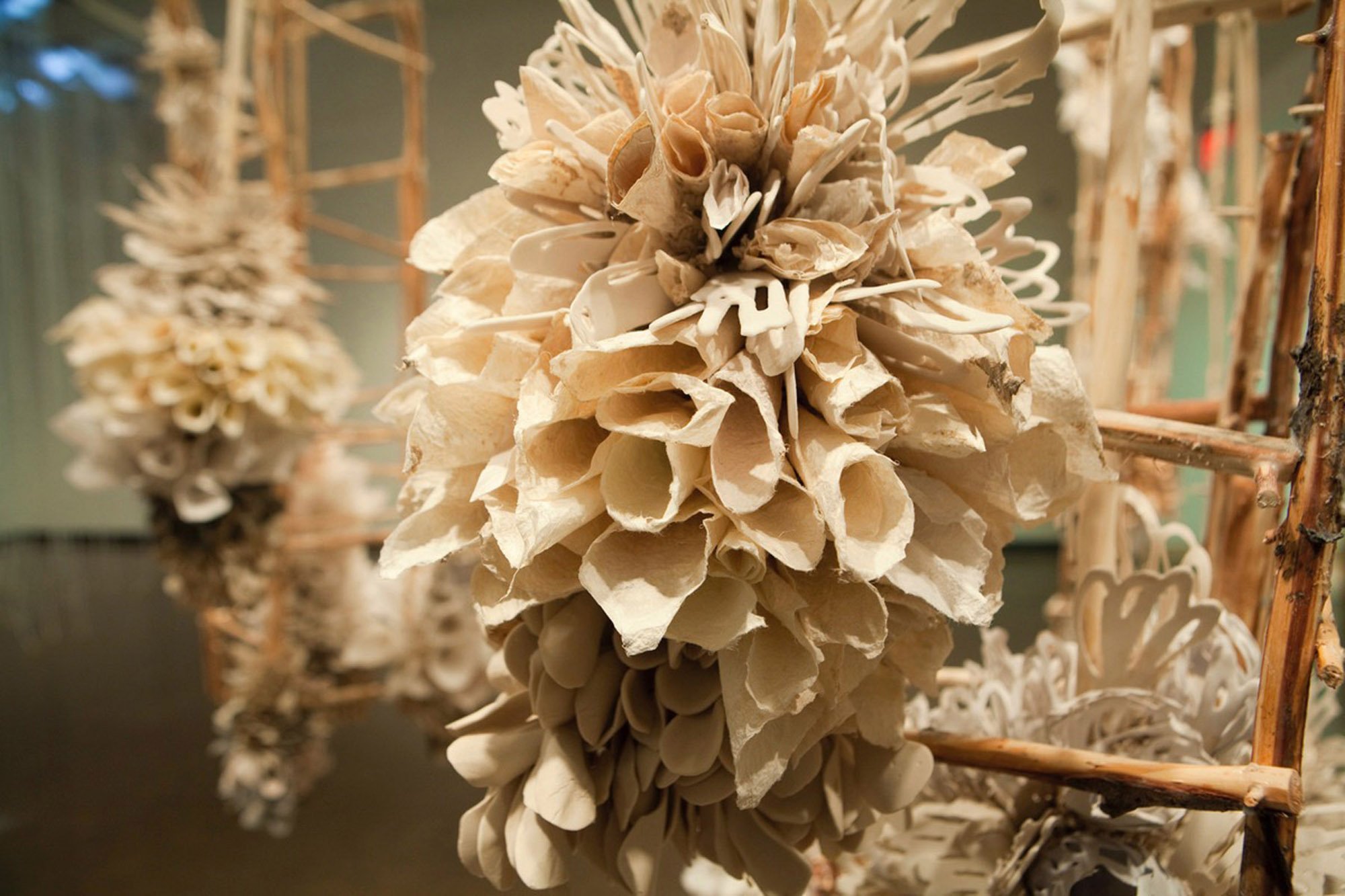W-8: “Wall Works” by Visiting Artist Rebecca Hutchinson


“In nature there are diverse states of existence that I continue to study; the structure of nature, the result of the state of nature by interaction with other forces of nature, the resilience of nature, and the complexity and awe in the engineering of nature. All these states of nature are rooted and formed in the motivation for the need to survive, and provide endless influences for diverse construction and conceptual possibilities for art making. And, more specifically, endless opportunities for metaphor use; speaking to the depth and complexity of living with the hopes of revealing the human condition in visual and sculptural form, utilizing traditional and non-traditional ceramic materials and processes.
Within the study of ecology and ethology these states of existence are articulated. As a point of reference for sculptural installation building, I have been utilizing specific structural engineering qualities found in functional growth relationships and deformities within specific plant formations. Similarly, and as powerful as organic growth, I have also looked at animal and insect structures and benefitted from an understanding of their ecosystem function and engineering. My main interest has been looking at the quality of coexistence and structural functionality found in nature and the beauty of species manipulation, which in nature observes a balance of the fragility of its surroundings while maintaining the essence of need and individuality.
My work focuses on the respect for process and the endless influences found in nature. Formally and structurally, my interest is in the details: quality of craft, connections, and structure, and conceptually an understanding of all physical parts to the whole. I build site-responsive clay and fibrous sculptural works made from indigenous materials, such as recycled 100% natural fiber clothing or harvested garden materials beat down to pulp and formed into handmade sheets, and industrial castoff surplus materials, like cotton thread from the bedding industry or sisal from the burlap bag industry.
Clay is either site dug or purchased and combined with pulp for a slurry of paperclay. I hand model, slip trail, dip surplus industrial materials or handmade paper forms, and pour paper clay slip between papers, and cut and construct. Each paperclay form is built to be fired or remain non-fired. A sticky mixture of paperclay mixed with glue binds the handmade paper and the paperclay florettes to each other and to a simple constructed wooden frame. Installation construction is influenced conceptually by specific growth patterns, but does not replicate nature. Like an animal that uses the vernacular from place, I, too, upcycle humble materials and remake them into what I hope to be exquisite sculptural forms.”
Exhibit Dates: November 1 - 30
Closing Reception: November 24, 4 pm
